Age of Enlightenment: The Promise of Circadian Lighting
Reaching behind a low bookshelf slightly taller than a typical 5-year-old — and one topped with a Seattle Seahawks gnome and stuffed kangaroo — Sara Barbee presses a button labeled “Alert.” Intense bluish light fills her classroom, and nearly all 17 kindergarteners respond with a collective “Whoooaaaaa.” Barbee, their teacher here at Renton Park Elementary School, walks back to the front of the classroom and ushers the students to sit “crisscross applesauce” on the perimeter of a brightly colored alphabet rug. Front-and-center rests a water tank atop a small blue table, which Barbee uses to teach her students about the buoyancy of objects in water.
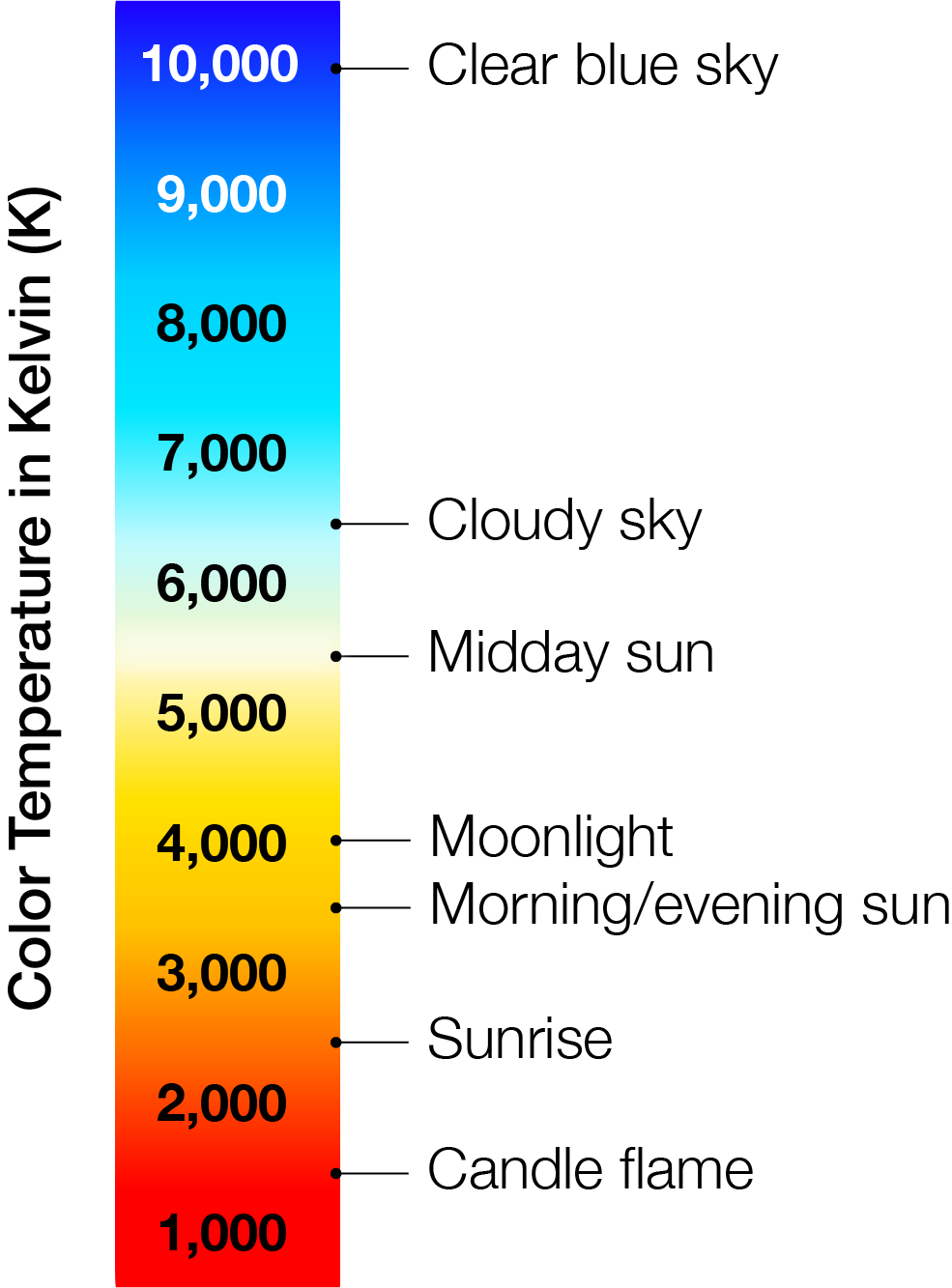
Scientists believe that exposure to bright, blue-rich white light during the day, and to softer, amber hues at night, helps restore the human body’s natural circadian rhythm.
Visual: Undark
Source: U.S. DOT
“Put your thinking caps on,” she beckons. “It’s a good thing we have bright lights on right now.”
Indeed, it’s not the buoyancy lesson that has drawn me to this school just outside of Seattle, but those funky new lights, which are designed to mimic the shifting colors and intensities of the rising and setting sun. Scientists believe that exposure to bright, blue-rich white light during the day, and to softer, amber hues at night, helps restore the human body’s natural circadian rhythm, a deeply ingrained, physiological drumbeat that, many experts argue, has been disrupted to ill-effect by our constant exposure to standard incandescent or fluorescent lighting — and more recently, to the relentless glow of electronic screens.
These are not, of course, new ideas, and doctors have long prescribed light boxes and related paraphernalia for seasonal affective disorder and other forms of depression. But it’s only now, proponents say — amid innovations in light-emitting diode, or LED, technology; amid calls for more energy-efficient lighting infrastructure overall; and amid a renaissance in scientific understanding of how human eyes, brains, and internal clocks interrelate — that a public health revolution, driven by more thoughtful lighting infrastructure, has the potential to unfold.
If that sounds overstated to you, even pseudoscientific, you are not alone. While enthusiasm for circadian lighting, sometimes called human-centric lighting, is on the rise — in classrooms, in office buildings, in sports arenas and nursing homes — experts suggest that, at best, much more science needs to be done, and at worst, a lot of what is peddled under the guise of human-centric lighting is bunkum. James Benya, an engineer and lighting consultant based in Davis, California, went so far as to compare some claims about circadian lighting to snake oil. “We know it is going to have a significant benefit for many people,” Benya said. “But without guiding science, and with the lack of protocols and standards, right now it is the Wild West.”
Still, there is little question that the study of human interaction with light is now in its heyday, and that the implications for our hopelessly indoor lives could be significant. Just this past October, a trio of scientists won a Nobel Prize for discerning the molecular mechanisms controlling our circadian clock — including light’s central role. Their work confirms decades of previous research suggesting that, when optimally synchronized to natural light, our internal timekeepers direct our bodies to feel hungry, sleepy, alert, or energized at appropriate times. Too little light from the blue end of the visible spectrum during the day, or too much of that same light at night, research suggests, can cause an internal clock to slip off beat, setting off a cascade of potential consequences. These include not just poor sleep, reduced concentration, and contrarian moods, but over the long-term, increased risk of depression, diabetes, and cancer.
And this has proponents of advanced lighting arguing for broader adoption of such technologies sooner rather than later. We may not know everything yet, they argue, but we know enough about the benefits of circadian lighting — and the drawbacks of current lighting — to put ideas into practice. “We don’t want to overstate the benefits. But we shouldn’t dismiss them either,” said Mariana Figueiro, director of the Lighting Research Center at Rensselaer Polytechnic Institute. “We have the technology now. It’s a shame that more people aren’t harnessing it.”
In her classroom, Barbee adjusts the lighting via a wall-mounted digital panel a few times during a typical school day. Four different presets range in intensity and in correlated color temperature — an approximation of the wavelength of the light, measured in kelvins, from 2700K to 6500K. Lower color temperatures appear as warmer hues, like the coruscating colors of a campfire, while higher color temperatures look more like a midday blue sky — cooler and brighter. She generally starts each morning with the “Alert” setting, the coolest and brightest, to help wake up the kids (and herself). She might switch to dimmer lights in orange-ish tones later in the afternoon or whenever the class could use some calming down.

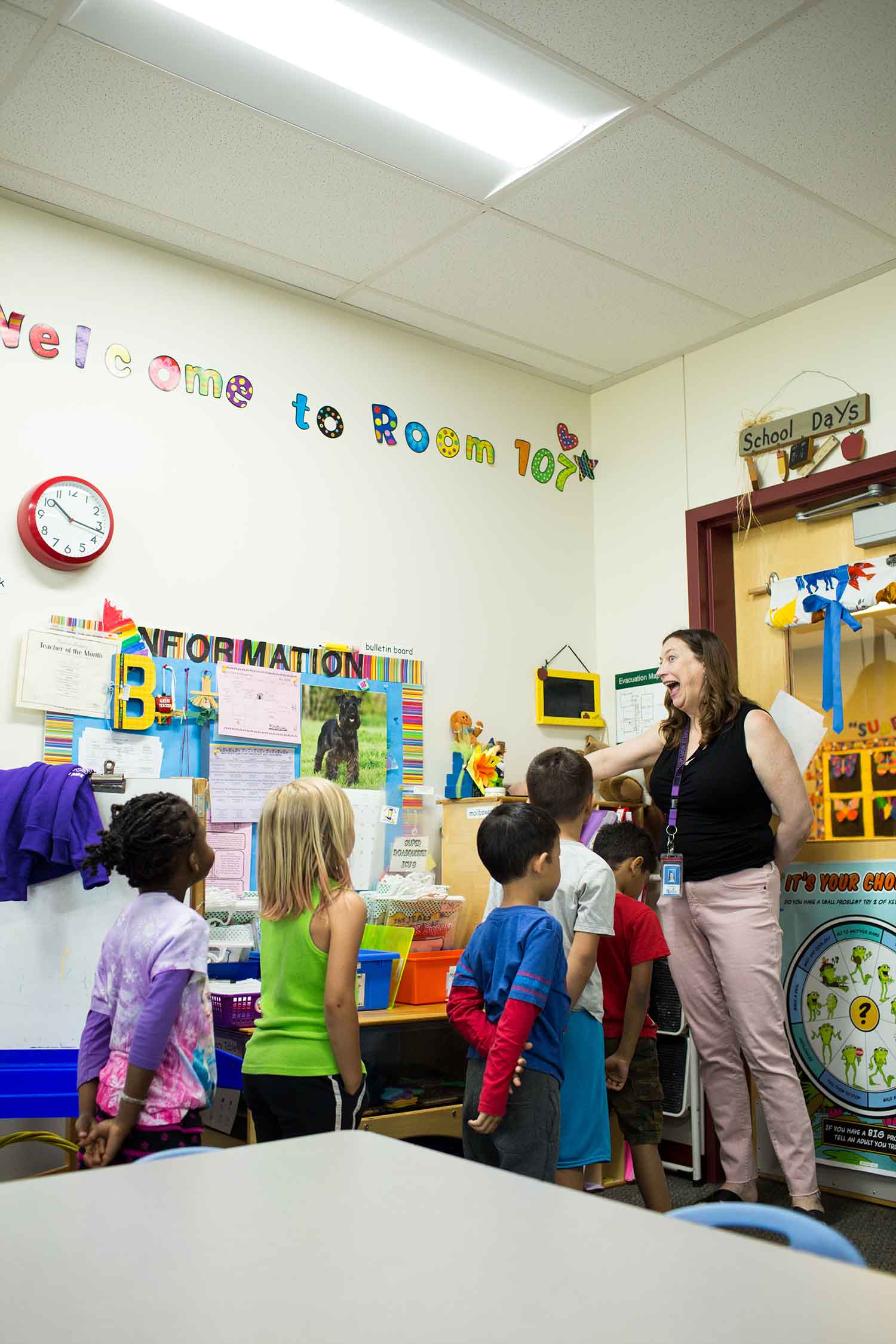
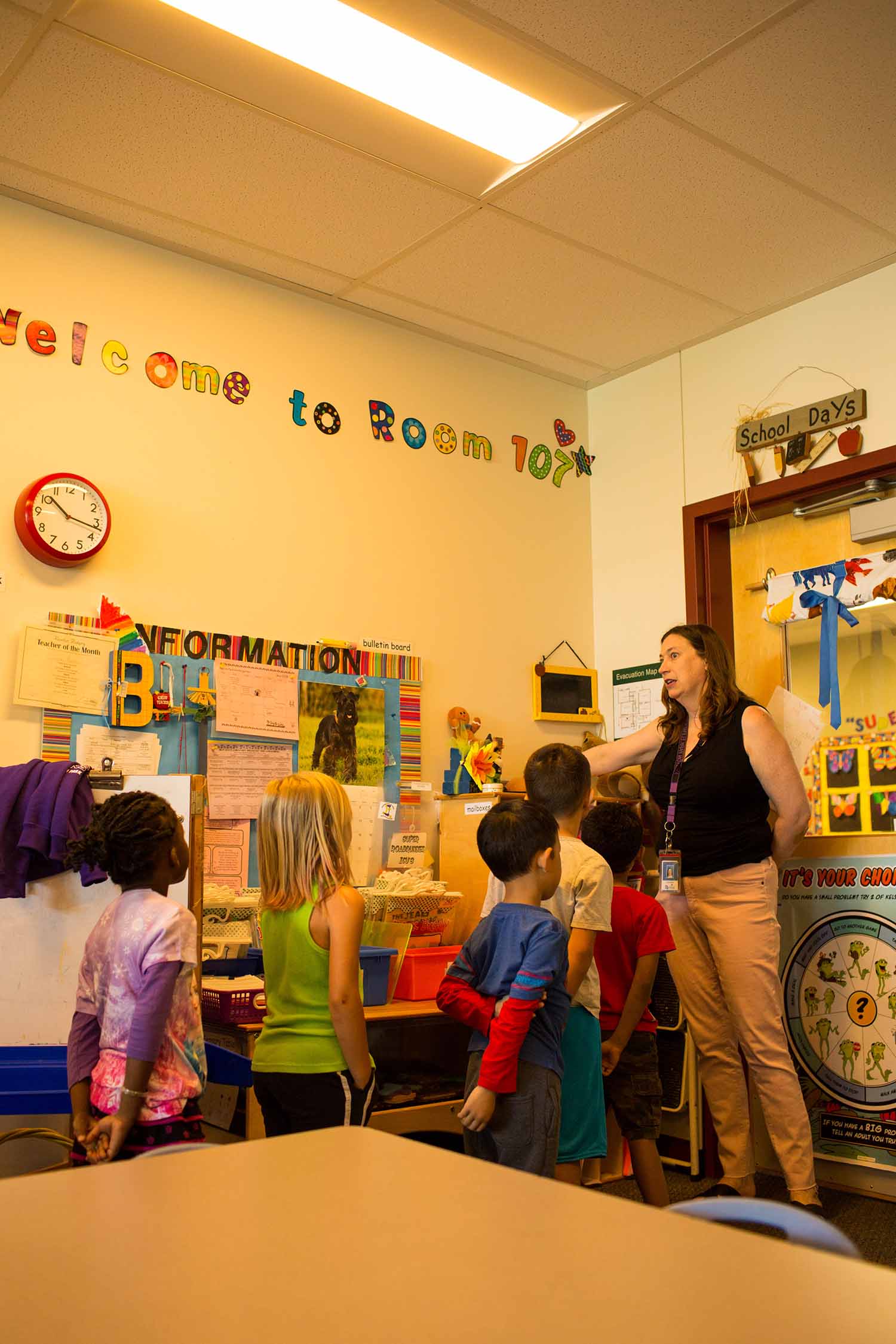
Right now, under these bright blue lights, Barbee has her students’ attention, and many of them struggle to stay seated, inching forward for a closer look at the water tank. Aydriane, Khloe, Princess and their classmates spend the next several minutes testing hypotheses for what makes a wood block sink. Maybe wrapping it in a rubber band? How about taping it to another wooden block? Alas, the wood won’t drop. “This is what scientists do,” Barbee assures her class.
“A lot of times they try something and it doesn’t work, but then they try again,” she adds. “That’s how we get smarter.”
Late last September, I met with Bret Coffman, a business process architect at the headquarters of Vulcan Inc., the investment and philanthropic firm headed by Microsoft co-founder Paul Allen. Out the north-facing window of a 10th-floor common room, Coffman and I could see the Space Needle standing tall amid the buildings and cranes of this fast-growing city. To the left, the waters of the Puget Sound glistened under partly cloudy skies. To the right, about a block away, we could see a century-old local business that’s long-helped illuminate this skyline: Seattle Lighting.
Coffman landed in the Emerald City 18 years ago from Colorado, one of the nation’s sunniest states. “When I first moved here, I was really unhappy,” he recalls. Two years into his job as the business process architect at Vulcan, Coffman was still struggling with sleep and focus. He needed frequent doses of caffeine to get through the work day. “Thank God there was a Starbucks downstairs,” he says.
His outlook brightened in 2014, when he was asked by company executives for assistance in investigating the potential benefits of circadian lighting. A tunable LED not unlike the ones used in Barbee’s classroom soon appeared above Coffman’s desk, and in words that would become familiar to me over the course of many months and many discussions, he repeated the circadian lighting refrain: “I immediately started to feel better.”
Just why Coffman and so many others feel this way is something that scientists are only recently beginning to understand — and not everyone agrees on the particulars. For most of the 20th century, it was believed that rods and cones were the eye’s only photoreceptors. That all changed in the early 2000s with the discovery of a third photoreceptor. A few years earlier, researchers had shown that the circadian rhythms of mutant mice lacking rods and cones responded to light, suggesting that what meets the eye results in more than just images formed in the brain. Somewhere, a mysterious photoreceptor was responsible for the circadian system “seeing the light,” said David Berson, a neuroscientist at Brown University who helped identify the new photoreceptors and their preference for blue-spectrum light.
In much the same way as the ear allows us to both hear and stay balanced, the eye’s rods and cones supply us with vision while these novel intrinsic photosensitive retinal ganglion cells, or ipRGCs, perform a separate function: They sense the quality and quantity of light, with input from the rods and cones, and send that information to a master circadian clock in the brain. That clock then conducts a symphony of cellular timepieces throughout the body, ensuring they all “rise and fall with appropriate relationships to the others,” explained Berson.
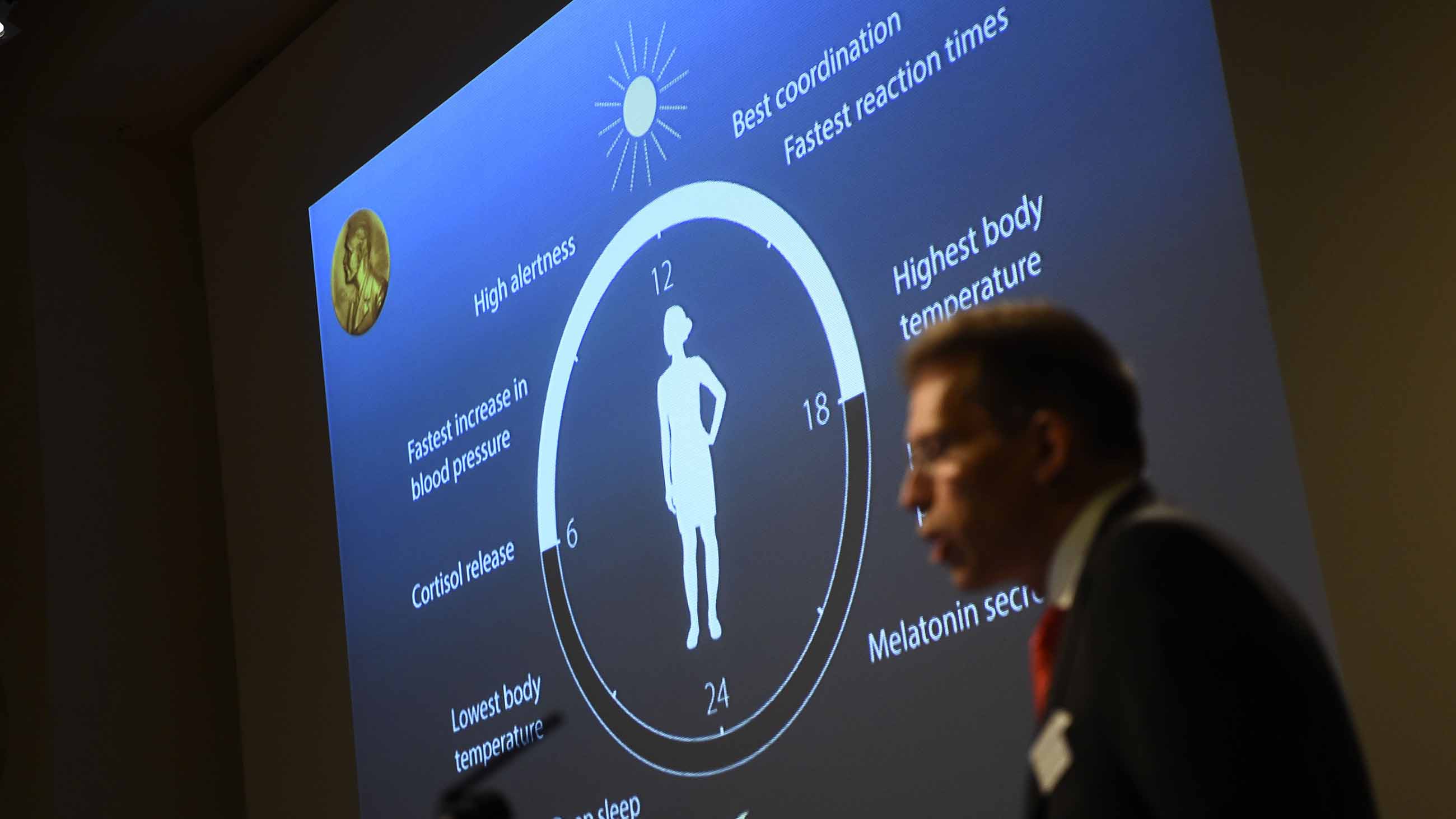
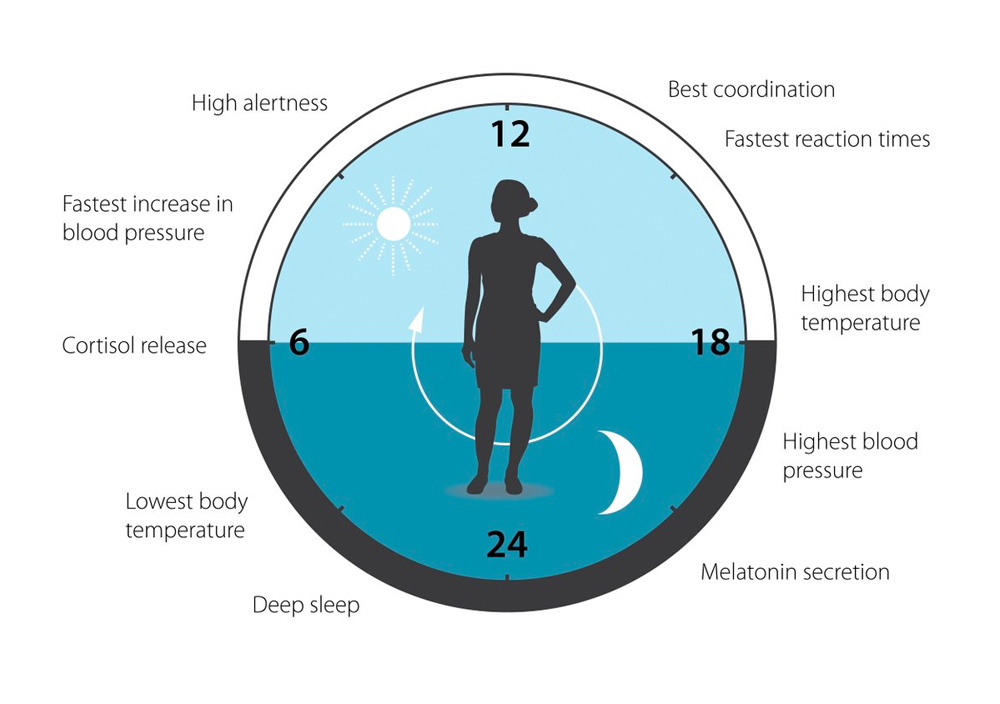
Visual: Nobel Committee for Physiology & Medicine; Illustration by Mattias Karlen
Over millions of years, this complex system evolved with the predictable daily patterns of the sun, its illumination of the sky and, after the eventual innovation of fire, the flicker of a campfire or candle. But the advent of electric light a little more than 150 years ago — a mere blink on the evolutionary timescale — began to move people increasingly away from those natural circadian cues. People in the developed world today spend, on average, 90 percent of the day indoors and often out of eyeshot of a window. And modern lighting turns out to be a poor proxy for daylight. The typical incandescent or fluorescent bulb, and even a standard non-tunable LED, may succeed in illuminating what we write or where we walk, but they will frequently fail to inform our physiological pacemaker that it’s daytime. And after the sun goes down, conventional lights — along with iPads, laptops, mobile phones, even certain street lights — may prevent the photoreceptor prompts needed for our clocks to properly wind down for bedtime.
It was with these basic concepts in mind that Jonathan Stine, program manager at the Renton School District Energy Management Office, launched the pilot project that would eventually outfit Barbee’s classroom with tunable LEDs. At the time, he wasn’t aware of any school district in the U.S. that had adopted the technology — though that’s not entirely surprising. While the switch to LEDs usually comes with both energy savings and a cut in maintenance costs over the old fluorescent lamps, which needed to be replaced every year or two, adding the ability to tune the lights to mimic natural light usually adds at least 25 percent to the cost of LEDs. And according to the U.S. Department of Energy, they don’t provide any further energy savings over conventional LEDs. Indeed, the DOE has argued that justification for circadian lighting in schools needs to go beyond energy savings and include “benefits related to a better learning and working environment, possibly linked to student learning outcomes, teacher satisfaction and retention, and human health impacts.”
As it stands, empirical evidence of such outcomes is hard to come by, but anecdotal evidence — from Washington to Texas to Sweden — is reaching a crescendo. The winter sky in the southern Swedish city of Malmo, for example, tends to look much like that in Seattle: dull and gray. But a visitor might not know that if they were standing inside Anna Milstam’s classroom at the Lindeborg school. Milstam recalled her return after summer break in 2015, right after the new lights had been installed. “I thought we had skylights,” she said. “I want to be in that classroom as much as I can.” Her ninth grade students echoed the sentiment. “When the sun comes up, we naturally get more happy,” said Augusta Andersson during a Skype interview in December — when the sun doesn’t rise in Malmo until nearly 9 a.m. “Now, with the lights, those positive feelings come a bit earlier.”
Louis Diep, another student, added that the lights seem to improve his focus on exams and the quality of his sleep.
Of course, these are just personal accounts, but it’s no secret to parents that teenagers can struggle to wake up in the morning for school, and they have a legitimate biological excuse: The circadian rhythm of a child naturally shifts when they reach puberty, pushing their cycle of sleep and wakefulness about two hours later than those of an average adult. Exacerbating that effect, teens may also be more sensitive than adults to disruptive blue light at night, while a lack of blue-spectrum light during the school day can further mess with middle school students’ sleep — specifically, extending the time it takes them to fall asleep by an average of 30 minutes, according to a study co-authored by Figueiro. Research has suggested that inadequate exposure to bright blue-rich light early in the day can make both adults and children extra susceptible to the effects of blue light at night. “If you want to sit in front of your iPad in the evening,” said Figueiro, “you better get a lot of light during the day.”
Andersson, Diep, and their classmates have been in Milstam’s room for going on three years now, and as seventh graders, they participated in a master’s thesis project, the conclusions of which seem to support Figueiro’s findings. They slept slightly better than students in a classroom lit by the school’s preexisting fluorescent lights, even after accounting for differences in age, exercise, screen exposure, and classroom windows, among other variables.
The use of tunable, circadian lighting is spreading — even though the science of what really works is ongoing. Here, a system developed by Danish company Chromaviso is on display at Aarhus University Hospital in Aarhus, Denmark.
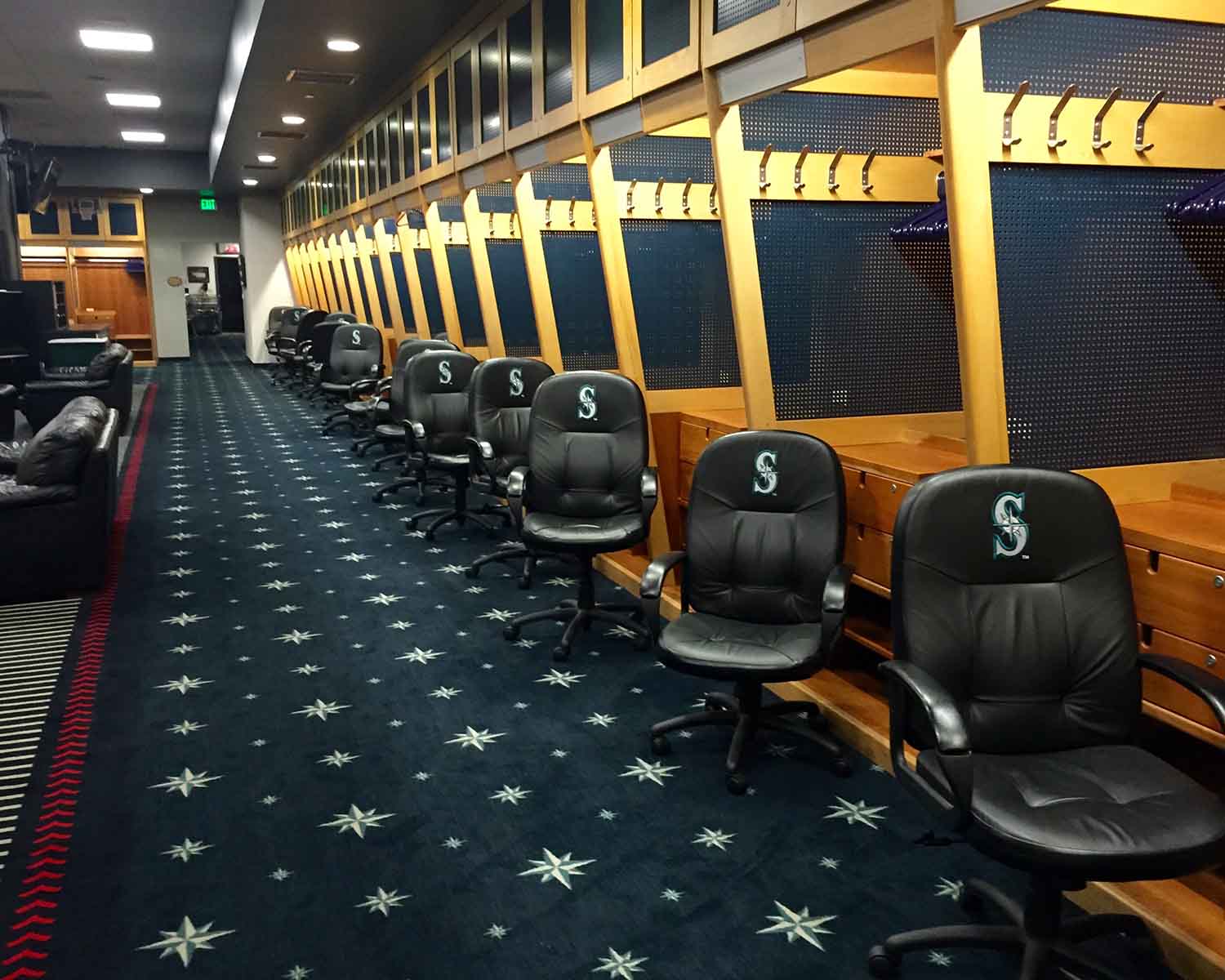

Hints of positive impacts have emerged in Texas, too, where tunable LED systems have been installed in some elementary and middle school classrooms in Carrollton, a northern suburb of Dallas. A September DOE report on the Carrollton systems suggested that the tunable LED system had improved the overall learning environment — though the DOE noted that empirically measuring the effects of the circadian lights of was beyond the scope of the project. Back in Washington, entire schools — including two Renton high schools and a brand new middle school — now have circadian lighting, and initial data out of Lindbergh High School seemed to echo the findings in Texas: The school reported a double-digit rise in SAT test scores following installation of the tunable LEDs.
The emerging evidence for circadian lighting’s benefits has been enough to prompt the Washington Sustainable Schools Protocol — design guidelines for learning environments developed in collaboration with the state’s Office of Superintendent for Public Instruction — to encourage the use of tunable LED systems in the construction of new school buildings. Meanwhile, the Seattle Mariners professional baseball team became the first in the major leagues to install circadian lighting in the players’ locker room in 2013. They preset the LEDs to provide stimulating pre-game light and calming post-game light. The latter aimed to help the players rest and recover for the next nine innings — usually scheduled for the next day.
“When you’re in sports, you’re looking for every advantage you can get to improve performance,” said the team’s former facilities manager, Scott Jenkins, who is now with the Atlanta Falcons of the National Football League. He recently installed tunable LED lighting in the Falcons facilities, too. Other professional teams including the Portland Trailblazers, Denver Nuggets, and New York Yankees have also followed suit. “No matter what sport you’re in, or whether you’re in a learning environment or in a health care environment, we all know that blue sky and sunshine mean everyone is more energetic and their mood is better,” Jenkins said. “When you live in Seattle and you suffer through months at a time without any real sunshine — well, there’s a reason Starbucks does so well.”
“There are only 32 NFL teams. There are only 30 MLB teams,” added Jenkins. “But think about how many schools there are, and how many health care facilities there are. To be able to use light to benefit people’s learning and health — there’s a huge opportunity there.”
Still, for all of its suggested promise, the impacts of tunable LED lighting on learning — or on anything else related to public health, for that matter — remain mostly speculative. Even Stine is hesitant to give full credit to the new lighting alone for Lindbergh High’s improved test performances. “There are so many factors in student achievement,” he said, adding that the classroom lighting systems would benefit from a rigorous scientific study.
Other possible benefits of circadian lighting in schools, such as improved behavior and attention, are even more difficult to gauge. “I don’t know what they would have achieved otherwise. But I have a class where all the pupils are motivated,” says Milstam in Sweden. “And it’s a different situation for many other classes in the school.” Barbee, too, recognized other factors that might influence her students’ responses, including her use of music and how she announces to her class when she switches light settings.
Experts share these teachers’ caution in making too much of the lighting just yet. “It’s thrilling for a basic biologist to see stuff translating into practical applications,” said Brown University’s Berson. “But we need to be careful not to get too far ahead of ourselves and assume we really know what a particular color of light is doing to an actual child in an actual school environment without appropriate controlled studies.”
Deborah Burnett, a lighting consultant partner with Benya, also worries that certain lights might even have the potential to harm some students. Children don’t have the same natural defenses in their eyes as adults, she noted, expressing particular concern for when light levels rapidly and drastically change multiple times throughout the day, which is how Barbee and many other teachers currently use the lighting. In fact, Milstam’s students in Sweden initially found the quick changes in brightness and colors too jarring and distracting, which prompted school officials to program the lights to very gradually adjust over the course of the school day.
For all the uncertainty, research does suggest that blue-spectrum light may boost alertness and cognitive function, and Coffman’s environs at Vulcan Inc. bears witness to this notion in exquisite detail. Near his desk is a small conference room with bright green-painted walls. Instead of another trip to Starbucks whenever he needs a strong pick-me-up, Coffman will now often opt for what he refers to as a “blue blast”: 15 minutes of intense blue light in this room. If he’s still feeling wired at the end of the day, Coffman adds, a short orange-hued blast will put him in the mood for a beer.
Vulcan’s lighting retrofit was the first large-scale installation of tunable LEDs in a U.S. office building, according to Planled, a lighting solutions company based outside Seattle, which consulted on the project. (They also partnered with the Renton School District.) On all six floors of the Vulcan offices, employees now spend their days under the new lights. In addition to personal computer-based controls, an employee can push a button that syncs their overhead LEDs to the day clock, much like in Milstam’s classroom.
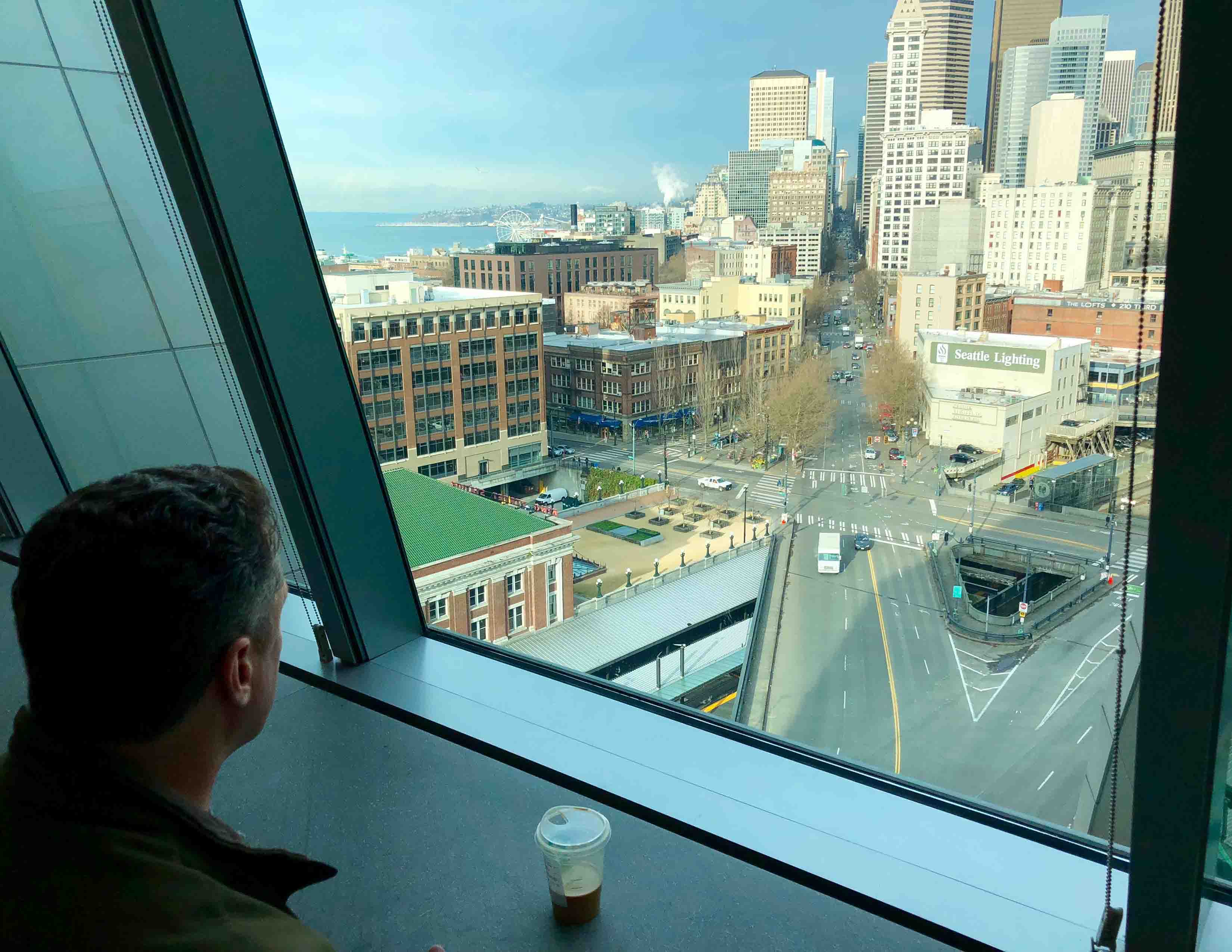
His employer in Seattle, Vulcan, Inc., was home to the first large-scale installation of tunable LEDs in a U.S. office building. Among other features, Coffman can visit one of several small conference rooms to get a blast of blue-spectrum light as a pick-me-up.
Visuals: Annabel Clark for Undark
“Your people are where most of the cost is,” says Cody Crawford, the head of facilities and operations at Vulcan. His office is down the hall, past a photo of the burning sun, from Coffman’s desk. He emphasizes the importance of educating Vulcan employees about the lights. “People in general don’t like change. They may not realize that the lack of light is making them tired and groggy,” he adds. “You almost have to force them to try it for more than an hour.”
Much like Barbee says of her kindergarteners’ responses to tunable LEDs at Renton Park, which is just a short drive south on I-5, Crawford can’t be sure how the new lighting is impacting Vulcan’s employees — or its bottom-line. It’s hard to measure productivity “unless you’re a manufacturing facility,” he says. Crawford’s team had considered assessing absenteeism, but complicating factors such as high staff turnover and variations in annual flu bugs dissuaded them.
“People are happy about it,” says Crawford says of the new lighting. “How much more effort do you want to put into [measuring] it? Time is money.”
Steven Lockley, a circadian lighting expert at Harvard Medical School, is among experts who have attempted to measure effects. His team found that people exposed to blue-rich light reacted faster and had fewer lapses in attention than people exposed to warmer hues. In a paper referencing his work, other researchers found blue light significantly superior to caffeine in boosting cognitive function and alertness in 21 people. Plus, light lacks the same knock-on consequences as a cup of coffee. “Caffeine at 10 a.m. will still affect your sleep at night,” says Lockley, noting the chemical’s five-to-six-hour half-life.
A report commissioned by LightingEurope, an industry trade group, calculated office productivity increases equivalent to about two more hours per month, a decrease in sick days of one percent and an increase in employment duration of one year as a result of tunable LED lighting. (They found greater benefits in the industrial setting.) And in a study by Figueiro’s team of daytime light exposure on office workers, employees receiving high levels of circadian-stimulating light during work hours had more stable circadian rhythms, as well as lower levels of depression and greater sleep quality, compared to employees receiving lower levels.
The employees in Figueiro’s study all wore a device calibrated to measure light exposures deemed capable of affecting the circadian system. Overall, her team found that nearly half of the workers studied did not receive enough light in the morning to adequately stimulate their internal clocks, despite nearly all of them receiving the Illumination Engineering Society’s recommended level of illuminance, 300 lux, at their desks. (For comparison, natural light is about 100,000 lux on a sunny day and 10,000 lux on a cloudy day.) Such recommendations, as well as most energy codes, are generally calculated with only visibility, safety, and energy-efficiency goals in mind. “Energy codes are getting more and more strict,” said Figueiro. “The tendency is to reduce the amount of light.” At Vulcan, for example, daylight sensors automatically reduce artificial lighting in response to available daylight, per a requirement from the City of Seattle.
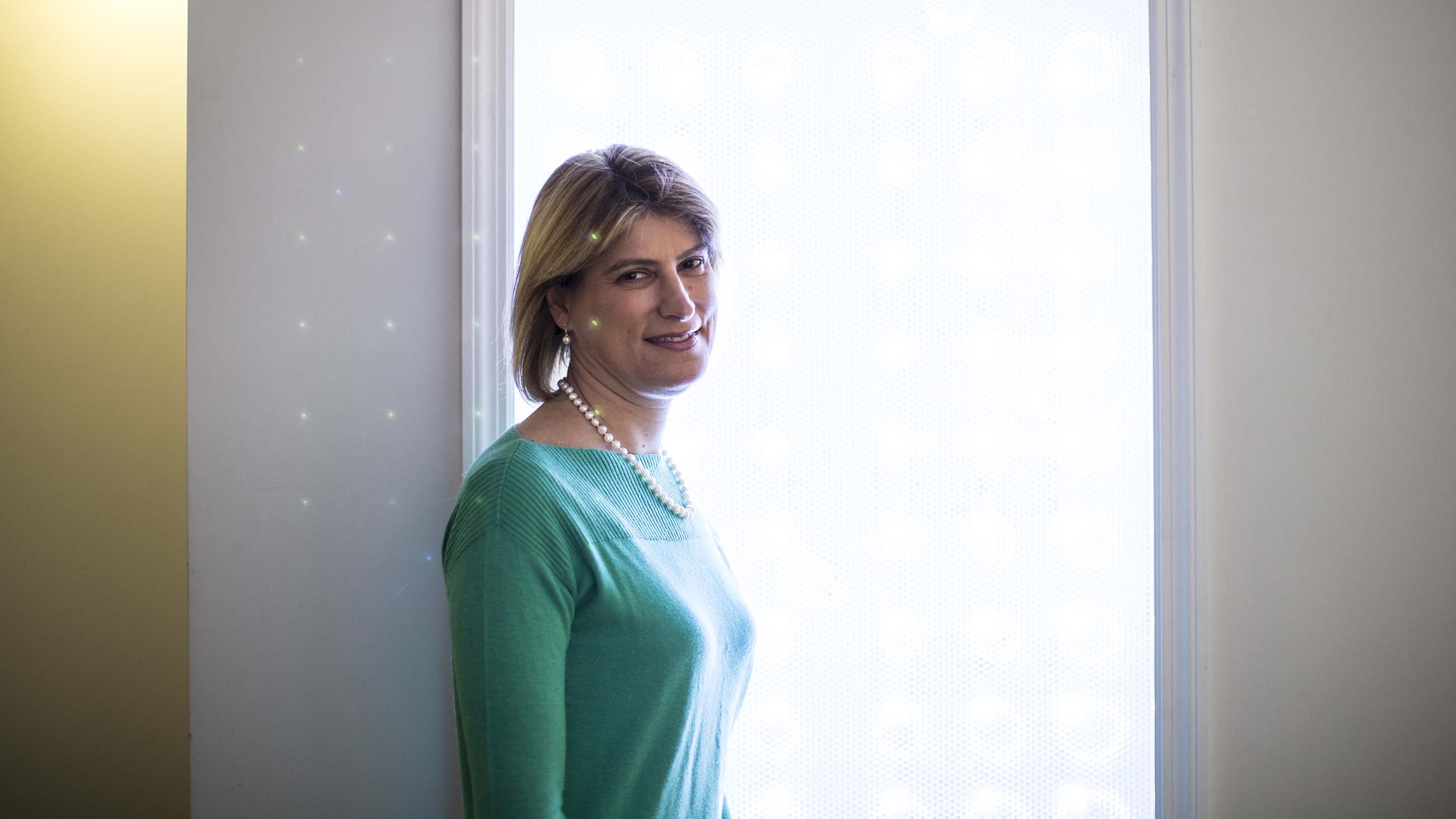
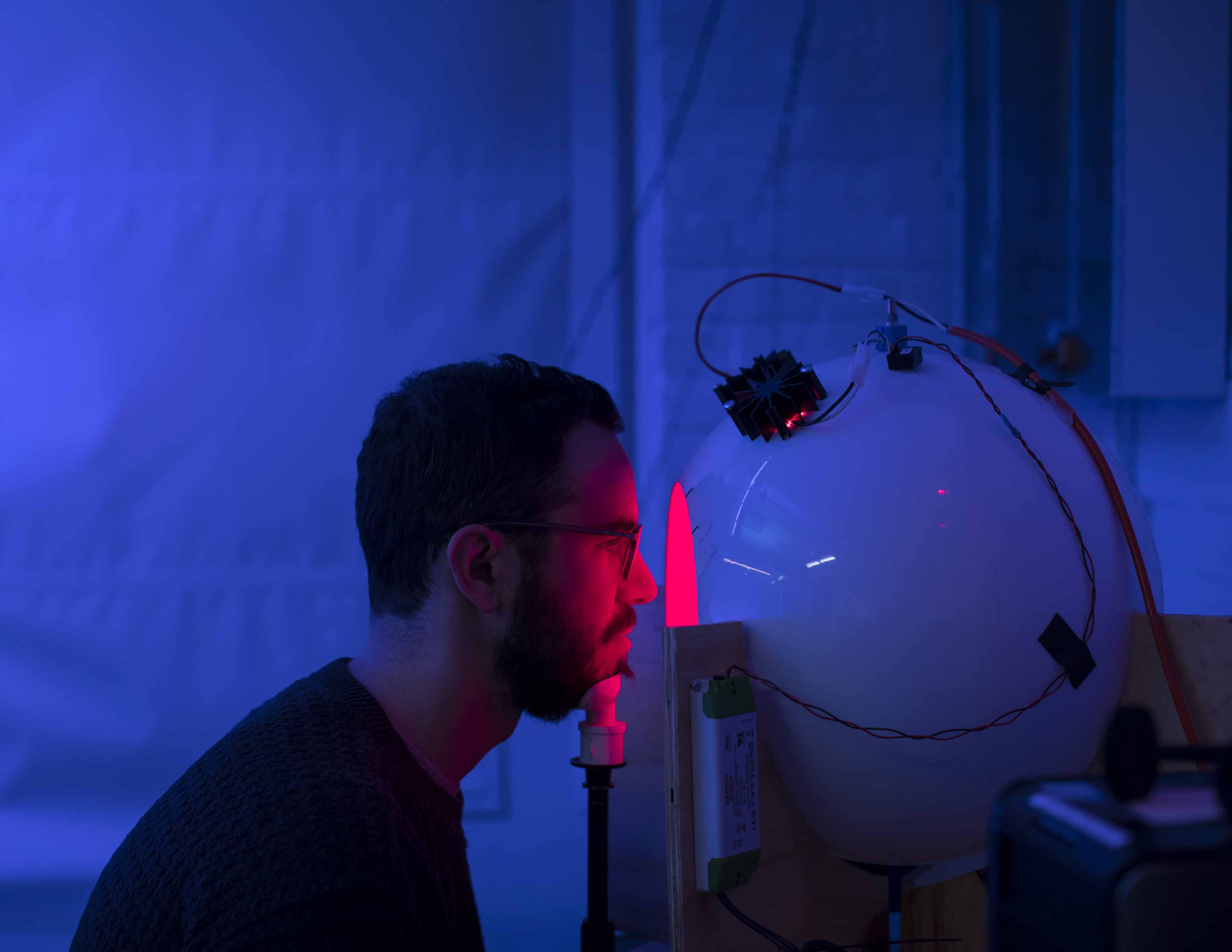
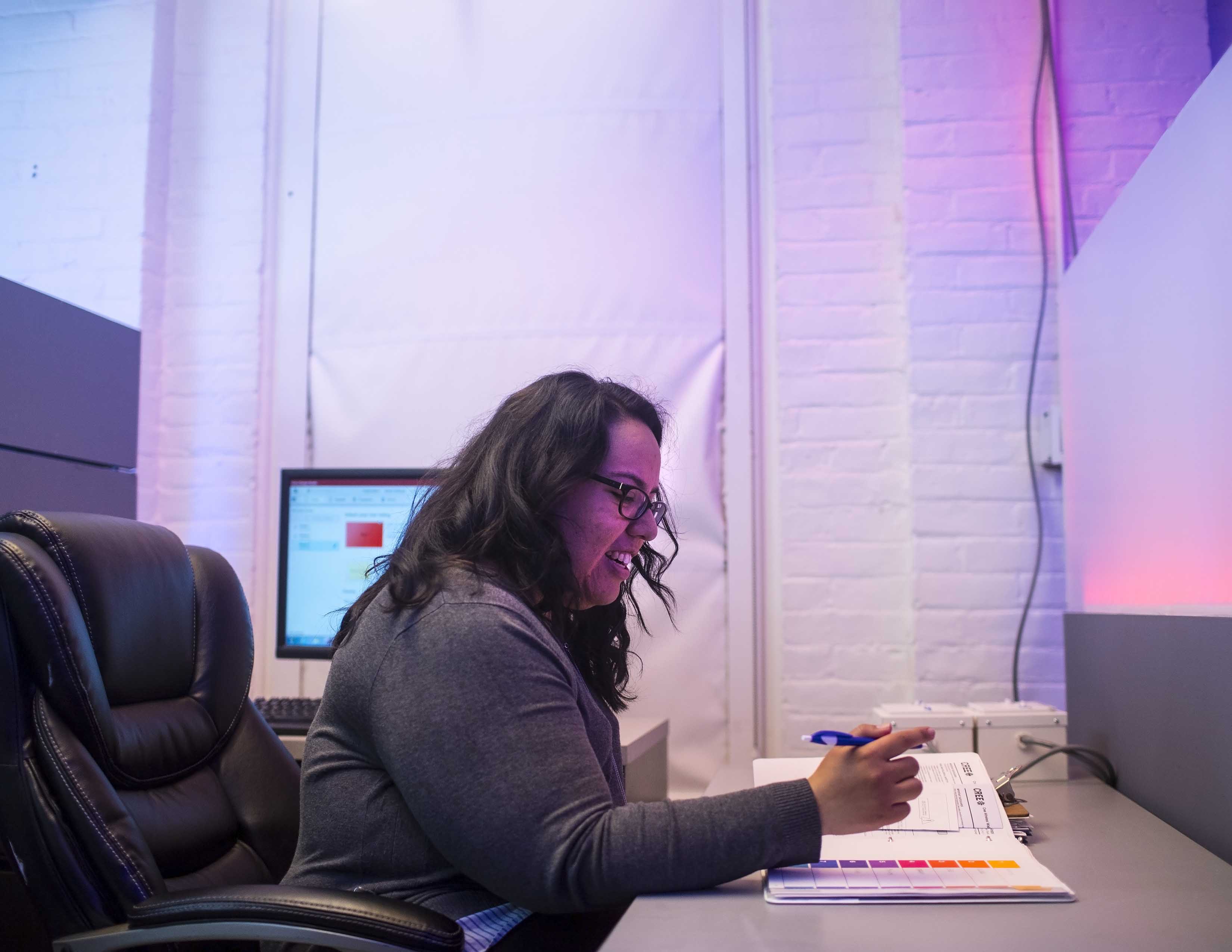
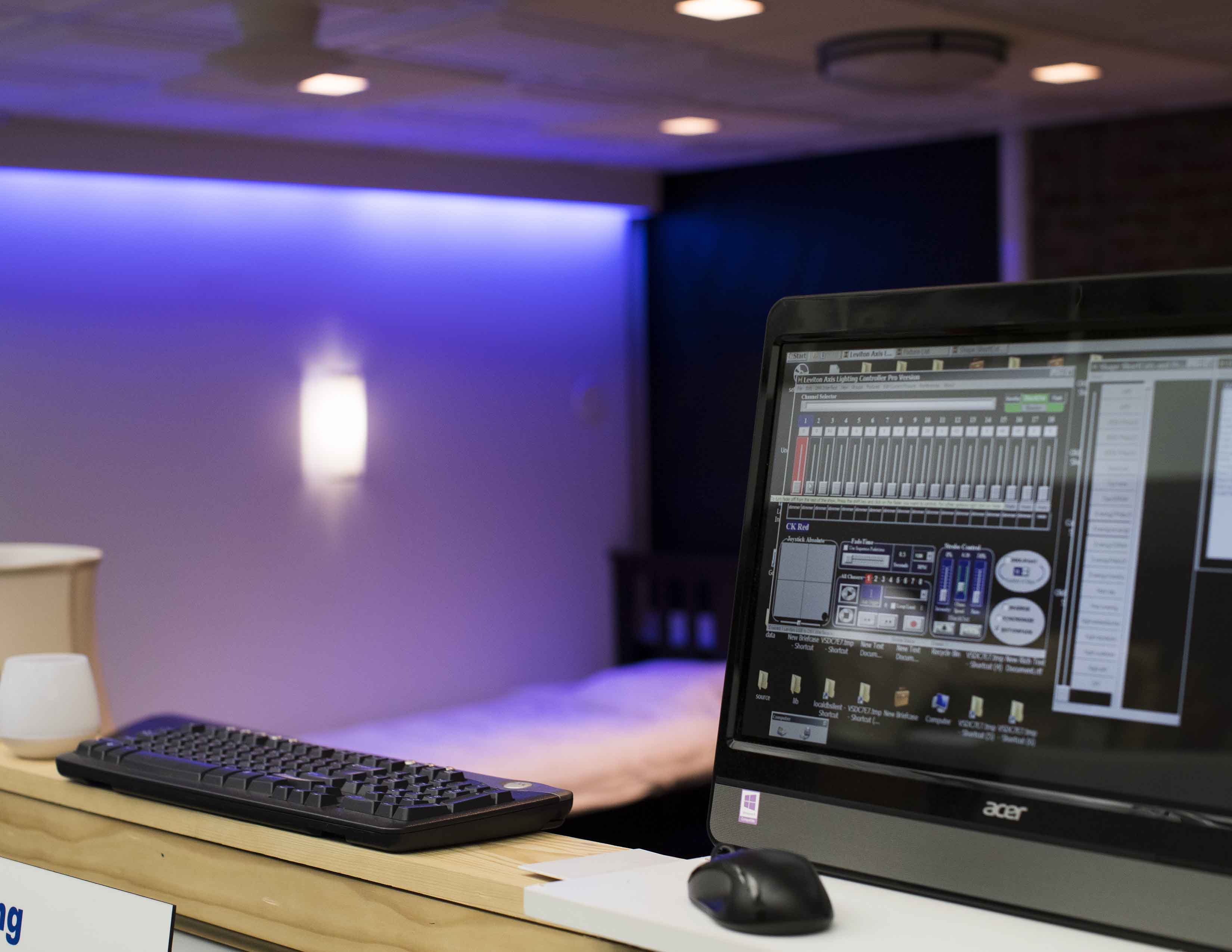
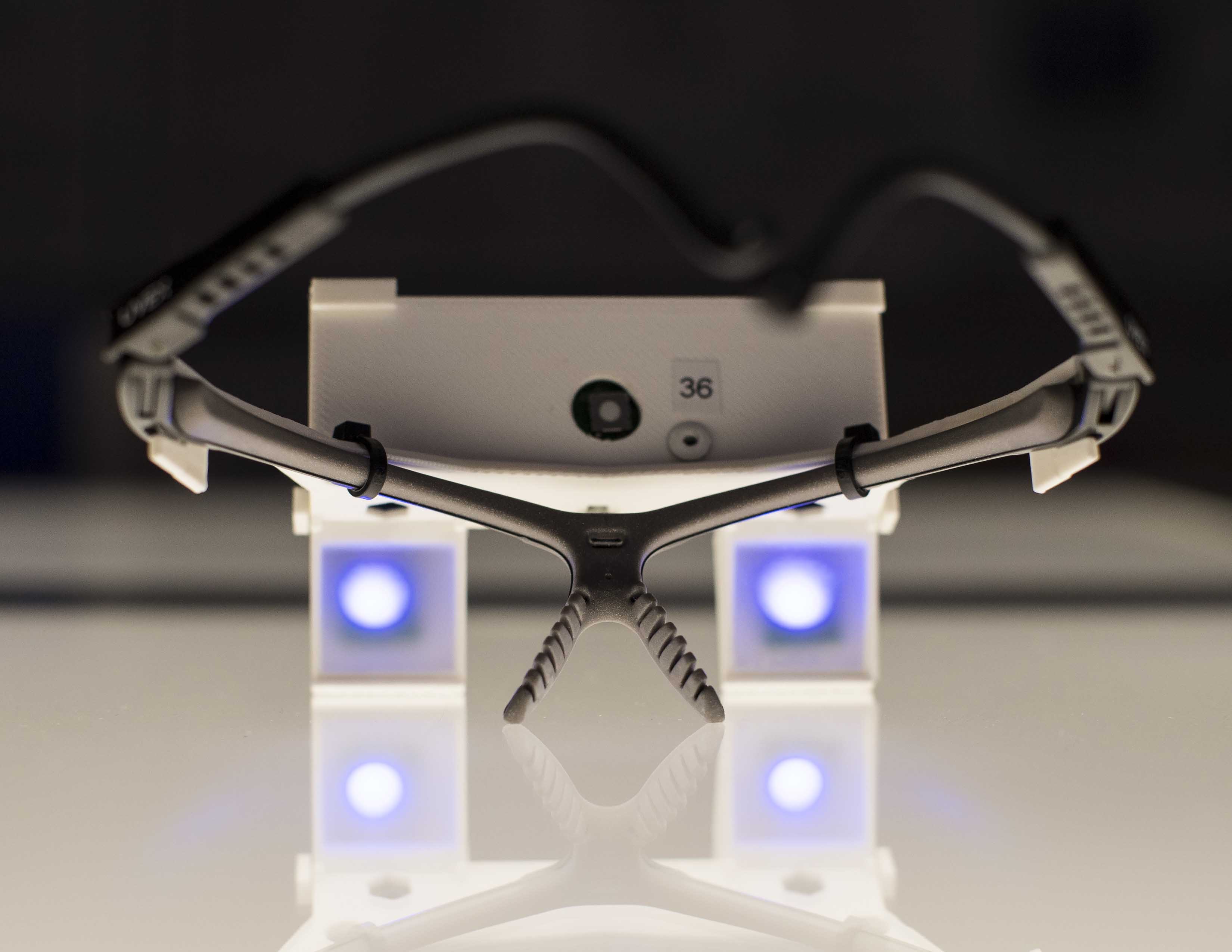
Russell Foster, an expert in circadian neuroscience at the University of Oxford, pointed out that while adding bright light in the workplace will increase levels of alertness, it remains unclear how that exposure might stabilize the circadian clock compared to light exposures, say, during your commute to work or while you’re in the bathroom brushing your teeth. “It may well be that it’s too late by the time you get to work,” said Foster, whose research uncovered some of the first evidence for the third photoreceptor.
“After the ‘Wow, this is extraordinary,’ it has taken us a while to get to the applications,” he added. “We’re now at an incredibly exciting stage. The next leap forward is making this work in the real world.”
Neuroscientists, biologists, sleep doctors, and architects around the world are attempting to address the questions necessary to make that leap: Just what intensity and color of light — and when and where and for how long — best keeps our circadian clocks ticking on time? How much does this recipe vary by age, sex, and other differences between us? In search of answers, some scientists are using devices designed to measure a person’s exposure to light. Others are leveraging functional MRI technology to understand the brain’s response to light. Still other researchers are attempting to decipher more details of the complex circadian circuitry via animal models.
Much of the work continues to focus on light’s dark side. Too much light at night, underscores a December report that summarized findings of an expert panel convened by the National Toxicology Program, disrupts sleep and other biological processes controlled by our clocks. But a consensus has emerged that the problem is not just over-lighting our eyes at night, but also prevalent under-lighting during the day. Lockley, Figueiro, and Berson were among more than a dozen scientists who penned an opinion paper in 2014 arguing for the consideration of both factors in lighting design. A study in mice published in October 2017 further hinted that some of the consequences of failing to do so may be passed down through future generations.
Marty Brennan, a Seattle-based architect, is among the newer names now seeking solutions. He has co-developed software to help designers simulate daylight. The tool was recently implemented in projects at the Swedish Medical Behavioral Unit in Seattle and Children’s Hospital of Philadelphia. Meanwhile, research from Kenneth Wright of the University of Colorado, Boulder, focuses on the more intuitive aspects of the idea. In a small study of preschool children published in March, he found that an hour of bright light before bedtime nearly stopped production of the sleep-promoting hormone melatonin. Suppression continued for almost an hour after the lights went out. Wright also co-authored a 2017 study that suggested exposure to natural light during a couple nights of camping — without any electronics — can rapidly reset the body’s circadian clock.
The takeaway: While scientists still can’t beat the real thing, they might be getting better at simulating Earth’s day-and-night cycles. “Electric light does the trick,” said Brennan.
Mickey and Minnie Mouse smile and sway on a windowsill — the bobble head dolls’ dance powered by rays of California sunshine. A dozen feet away, a woman sits in her wheelchair engrossed by a soap opera. She’s back in her room after winning a round of bingo, and will soon roll down the hall to lunch at the Bistro Cafe. The stretch of hallway outside her door is known in this Sacramento nursing home as Bamboo Lane. Since the ACC Care Center replaced Bamboo Lane’s fluorescent lights — which stayed on full blast day and night — with the tunable LEDs, she and other residents report that they’ve been sleeping better and experiencing improved moods. Melanie Segar, an administrator at the center, describes one resident, as having gone from being angry much of the time to being in a “happy place.”
“That’s the best we can hope for with dementia,” Segar says.
By the age of 75, science suggests that the average adult receives just 17 percent of the light needed to fully stimulate the circadian system. A yellowing lens, a narrowing pupil, cataracts, and increased time spent indoors can all conspire. To make matters worse, blue is the part of the light spectrum filtered by the eye’s aging lens. This lack of light reaching the retina can disrupt the natural fluctuations of hormones such as cortisol and melatonin, explains Dr. Scott Stringer during a visit to his office at the nursing home.
When Stringer started at the center four years ago, he began giving some residents with behavior and depression issues an unusual prescription: a couple of hours of morning sunshine. That’s generally a fillable order in a city boasting 265 annual days with sun. “Sunshine is still the gold standard,” says Stringer. However, for a 99-bed facility, it’s not practical to get everyone a daily dose of courtyard sun. The introduction of circadian lighting at the center means Stringer’s light prescriptions are no longer limited to those he’s able to roll outside.
Research suggests that manipulating artificial light could prove a useful non-pharmacological tool to regulate the circadian rhythms of older adults, especially those suffering from dementia. The disease can damage neurons in the region of the brain that controls the circadian clock. So, if the tunable LEDs really can compensate for some of that loss, Stringer anticipates a significant impact on residents’ well-being and on health care costs. “Hospital readmissions cost a lot of money,” says Stringer, adding that the nursing home should be a “one-time destination.”
The ACC Care Center was the focus of another DOE study, conducted after the center had installed its first tunable LEDs in a couple residents’ rooms and the adjacent corridor of Cherry Lane. In addition to energy savings of 68 percent relative to the old fluorescent system, they found that the three residents living in the two rooms had 41 percent fewer incidents of yelling, agitation, and crying during the three months following the installation compared to the preceding three months. Nursing staff also noticed that these residents began consistently sleeping through the night.
“I didn’t think much about lighting before. But I’ve become a true believer after seeing how it’s affected residents,” says Segar, as we finish touring the center. Once Cherry Lane got the tunable LEDs, she recalls, residents from other corridors began hanging out there. “And their family members began asking when they would be getting the lights too,” said Segar.
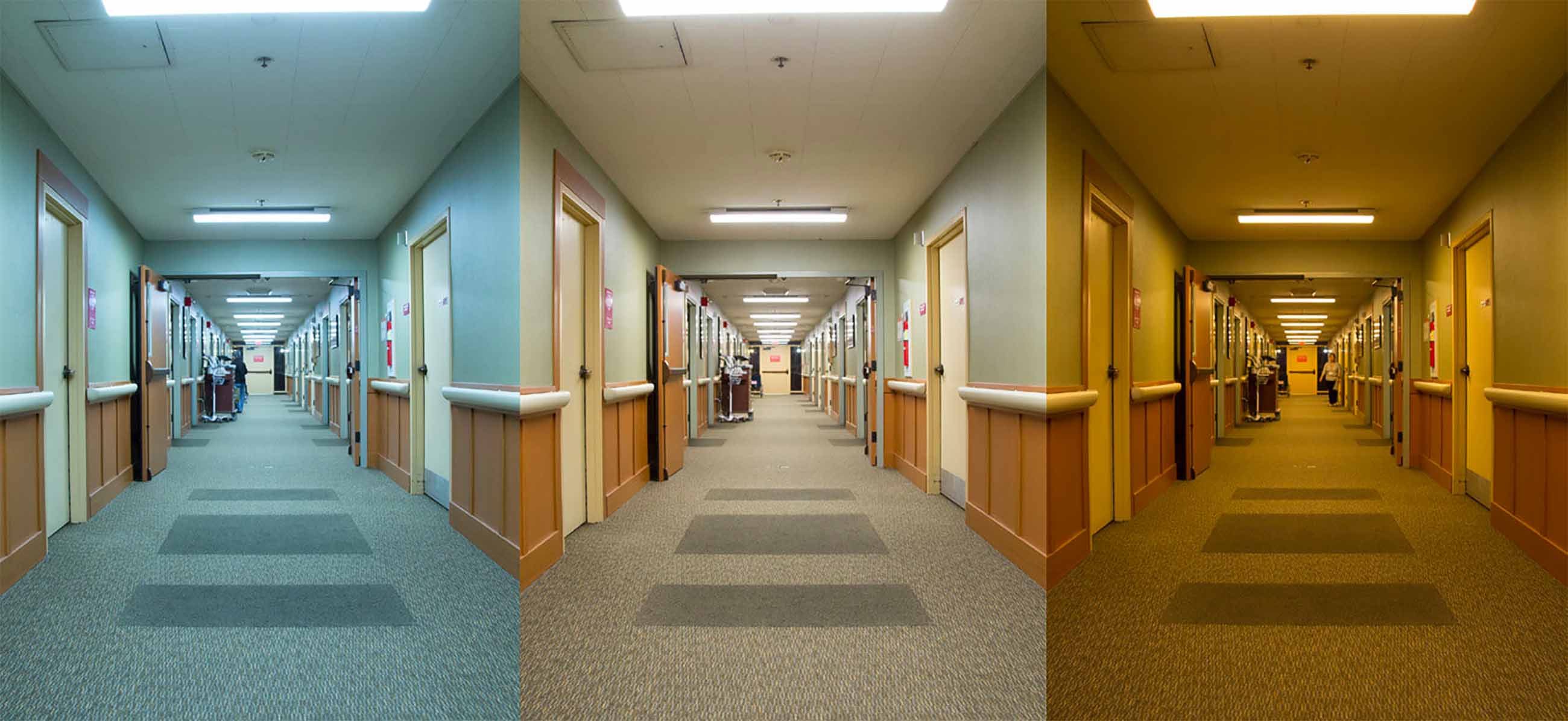
Among the goals of the study was to to see if new technology and proper lighting could enhance the health and lives of individuals with dementia, specifically senior citizens. This DOE video discusses the results.
The center has now replaced the lights in all halls, common areas, resident rooms, and bathrooms as part of a broader remodel of their 30-year-old facility. Stringer is eager to study the impacts in more detail than what can be inferred from a small uncontrolled study. “We need a prospective study to see if it’s really the lighting,” he says.
That’s the other refrain I heard repeatedly over the course of the last year. While there are strong hints from research advances in cellular biology and neuroscience, some peer-reviewed studies in animals and people and a number of compelling anecdotes, much better data is needed to optimally apply circadian lighting in the real world. “We need measures of light exposure over long periods of time in a range of different settings in a larger number of subjects,” said Foster, adding that improved technologies for measuring sleep, circadian rhythms, and light exposures should make such studies doable. “Until we have that data, designing those lighting systems appropriately is going to be guesswork. We may guess correctly and it may be better than what we got. But, ideally, we should have evidence-based solutions.”
Such solutions will need to consider a host of complicating factors. Whether or not exposure to light will help or hinder someone’s rhythms comes down, primarily, to getting the right color at the right intensity at the right time and for the right length of time. But the response of each individual’s circadian system is unique, varies by age and is further influenced by other factors such as region and season. Human evolution began near the equator, where we never dealt with any significant shortening and lengthening of daylight hours. Our third photoreceptor also evolved with light coming down from the sky, meaning the angle at which light hits the eye is likely important too. What’s more, researchers are finding that exposure to blue-spectrum light may be less critical for stimulating the circadian system when the overall light exposure is high.
No standard yet exists for measuring light that affects people via the third photoreceptor. Traditional light metrics such as lux, lumens, and color temperature are based on rods and cones alone. At this point, experts can only agree with the need for a standard single metric for the circadian effectiveness of light. In their studies, the DOE used something termed the “equivalent melanopic lux.” Figueiro and her colleagues use a metric they call the “circadian stimulus.” Meanwhile, a committee of the International Commission on Illumination (CIE) is attempting to translate the scientific consensus into a first international standard. John O’Hagan, director of the CIE’s Division on Photobiology and Photochemistry, noted that voting is underway and a final version could be published by the end of 2018.
The new standard will include information concerning the effects of age, an area of personal interest to O’Hagan. His father-in-law suffered from Alzheimer’s until his death. “I was horrified at the environment he had to live in,” recalled O’Hagan, referring to ever-present fluorescent light his father was exposed to. “I firmly believe that something can be done.”
Harvard’s Lockley added his sense of urgency to leveraging circadian lighting. Building managers have started swapping out old lights for energy-efficient LEDs, usually of the cheaper, non-tunable variety, he said. Designers of new construction are generally opting for the same. Because of the long lifespan of LEDs — much of their appeal — it could be a decade or more before those lights fade to yield another justifiable opportunity to invest in tunable LEDs. He did highlight one notable early adopter: In 2016, NASA installed tunable LEDs on the International Space Station.
“If it’s good enough for astronauts on the space station,” Lockley said, “then it’s good enough for all of us.”
Lynne Peeples writes about science, health, and the environment from her home office in Seattle. Her work has also appeared in Scientific American, Reuters, Popular Science, Environmental Health News, and Audubon Magazine, among other publications.
UPDATE: An earlier version of this story imprecisely portrayed Seattle architect Marty Brennan as having solely developed and deployed daylight-simulation software now in use at the Swedish Medical Behavioral Unit in Seattle and Children’s Hospital of Philadelphia. Brennan co-developed the software, and it was largely implemented at these institutions by others.


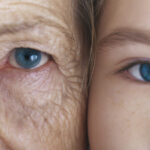


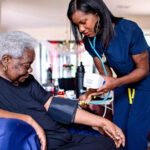
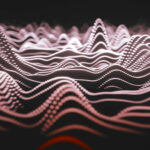



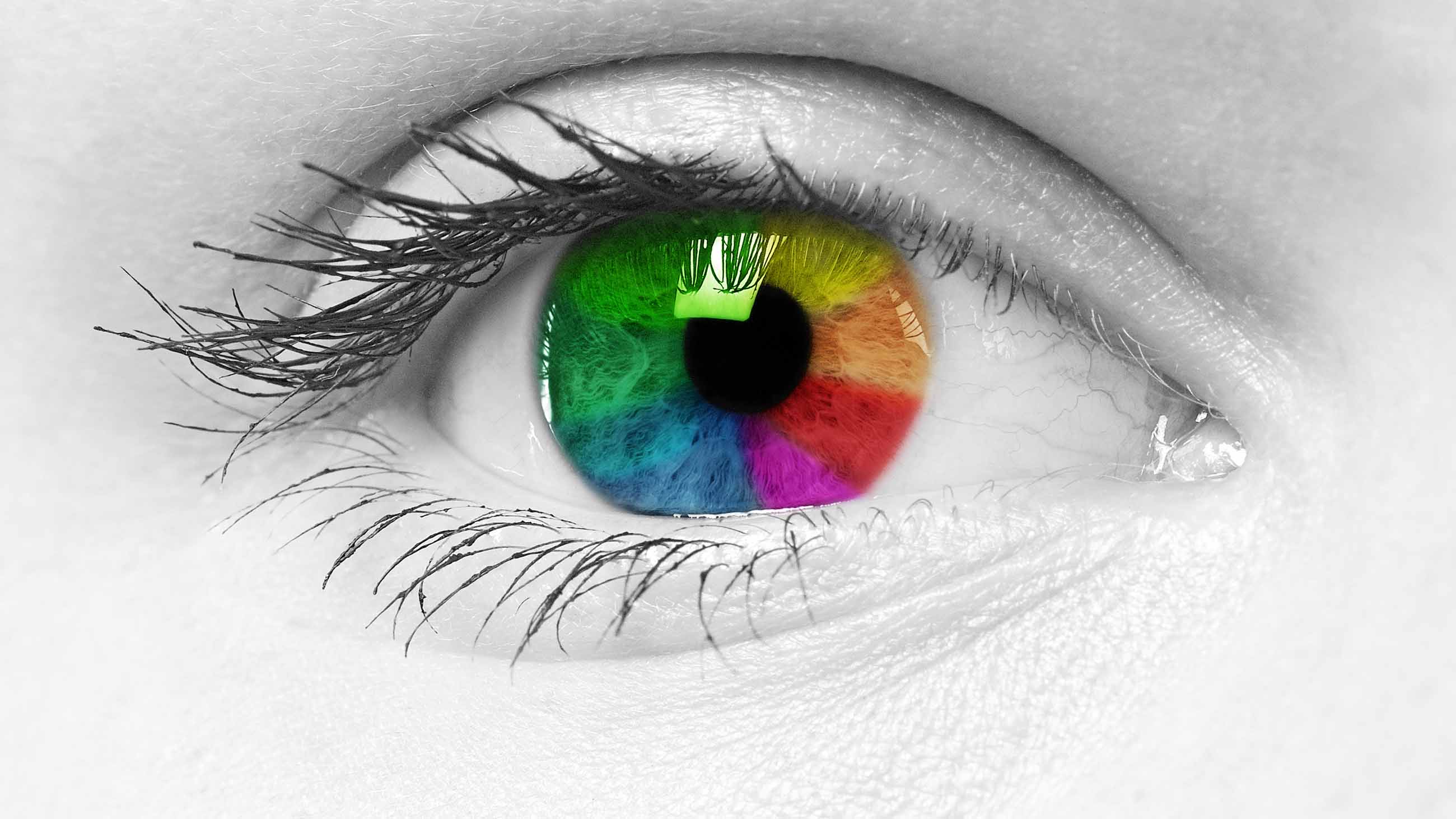
Comments are automatically closed one year after article publication. Archived comments are below.
thank you for sharing with us, I think this website genuinely stands out : D.
Fantastic article and thank you for sharing such a comprehensive look into the application of circadian supportive lighting.
While it is true that ZGF is leading the charge with circadian lighting applications, it must be pointed out that both the Swedish Ballard and the Children’s Hospital of Philadelphia projects occurred during my tenure at ZGF. I am responsible for design work and all the challenges associated with shepherding the innovative lighting systems for these fine projects. Mr. Brennan did support the commissioning effort on Swedish Ballard but did not participate in the Philadelphia project. The mentioned software was also co-developed by myself and Mehlika Inanici at the University of Washington.
Rob, please see this article related to color & intensity study done at RPI. It seems like both are likely important.
https://sleepbetter.org/does-apples-night-shift-really-work/
Wow! What a great read! My grandfather recently passed away after two years in a nursing home. He was in the dementia ward due to the stroke leaving him with very limited communication abilities, but most of the residents were actual dementia patients. A lot of yelling, aimless wandering, occasional violent tendencies, as described in this article. I wish they had this lighting system for my grandfather and the other residents. It sounds like it makes the dementia ward a little less hellish.
Good, balanced article that was like a ride on a see-saw. “this is so great”…followed by…”well, maybe it wasn’t the lighting alone”. Kids and adults alike are easily interested in dynamic things, like quickly changing a light color. I, for one, remain convinced that this is mainly psychological, not physical. At the very end of the article the most important fact is revealed: It is not color temperature, although certain wavelengths have a greater affect; not duration, although that is very important…it is INTENSITY of the light exposure which would have definitive affects on your internal clock. Keep the research going! It may lead to some really great suff. For now: Smoke, mirrors and marketing…for the most part. Just like Apple and their night shift: proven wrong…it is all about the intensity, not the color.
This article was very informative. I am looking forward to seeing how the new findings will effect our current view on lighting levels. The Children’s Hospital of Philadelphia Behavioral Health Unit referenced in the piece is a great example of the use of circadian lighting to improve the overall mood of patients and instill a more positive environment. ZGF Architects were the designers behind the project (https://www.zgf.com/project/childrens-hospital-of-philadelphia-medical-behavioral-unit/) and are regularly utilizing circadian lighting in their recent designs.
Great article, thanks for helping to raise awareness of the link between light and health! Another approach worth mentioning, there are several companies devoted to recreating natural light indoors (providing sunlight during the day, then candle or fire light at night). Telelumen has pioneered the ‘recording and playback’ of natural light: http://www.telelumen.com/. Sunlight Inside has developed stand-alone lamps which automatically reproduce the cycles of natural light: http://www.sunlightinside.com/. These companies actively mix light from multiple different color LEDs to mimic the daily, and seasonal cycles of natural light. You can benefit from light that’s closer to the natural light cycle today, while the scientists continue to work on the underlying mechanisms, so why wait!?
Living in Alaska, there was a pronounced difference of wakefulness, energy and mood; depending on the season. Five hours of rest in June seemed much more refreshing than ten hours in December. I attributed this to the day-length at the time and always figured that it’s possible to increase the total amount of one’s wakeful hours by using auxiliary lighting to simulate an earlier sunrise, for instance. Or swap northern and Southern Hemispheres at the equinoxes if you’re well-to-do. So I’m very interested to procure tunable LEDs.
I have some experience with optoelectronics and tried like heck a few years ago to design an LED lamp that would mimic the solar profile but was unable to find enough examples (colors) to completely cover the bandwidth from red to violet. Most lamps I found were narrow BW (like 15nm) and/or narrow viewing angle, so this left many gaps. Plus some colors cost much more than others. So I’m going to find out about these tunable guys! I enjoyed reading all of your thoughtful comments.
Excellent article on a complex topic. What’s exciting is the growing recognition that changing lighting types as well as intensity can affect sleep, alertness and overall human behavior. We need to better quantify the effects, but so far it seems encouraging. The only thing this article misses is the flip side of the picture — the widespread use of fixed-color bluish LEDs in the outdoor environment with very little investigation of the impact on wildlife or humans. Sadly, the only metrics usually considered for outdoor lighting are cost and energy efficiency. I have written about those topics for IEEE Spectrum and Optics & Photonics News.
Excellent article. It will be interesting to see how recommended lighting levels will adapt to the new findings.
This is a great article, filled with lots of good stuff. It seems that the more we learn, the less we really know. There’s a broad range of theories out there ranging from blue-rich, to bad blue vs. good blue, to the other problem of Kelvin temp doesn’t tell the story. Even “warm” 2700K produced with phosphor coated blue pump has a blue spike in the theoretical “bad blue” range. Unfortuately, I also saw an article that measured the SPD of iphones nighttime mode and while visually it looks very different ( more amber) the SPD isn’t that dramatically changed.
The great news is that awareness is coming and after 30 years in the lighting fixture industry industry, it’s nice to see LEDs finally discussed in their real advantage rather than how they got hijacked for lpw and efficiency. The future of lighting and what we are going to learn about its effect on human health and well being is going to make the last 2 decades of energy savings look like child’s play.
This is the best article on LED lighting I have read in quite a while. Most articles focus on anecdotal problems with LED lighting and demonstrate only a limited understanding of the lighting revolution that is going on around them.
Great article, excellent detail on the non-visual photoreceptors in the eye. I’m a little surprised that there wasn’t any mention of programs that can change the quantity of blue light emitted by devices that we use all the time, such as f.lux (https://justgetflux.com/) for laptop and desktop computers, or night shift on the iPhone. I’ve been using f.lux for about 10 years now, and it’s really helped me personally go to sleep at earlier and more consistent times. For the DIY enthusiast, there many many Kelvin scale tunable LEDs out there (Phillips white ambiance comes to mind) so you can try implementing these systems at home. That being said, I’d love for my workplace to try this type of lighting.